As diplomatic games continue, real human costs mount when Russian drones shatter families and transform distant headlines into intimate grief
NOTE: Marina informed me that her cousin died of illness, not from the attack.
Summary of the Day – April 3, 2025
The abstract horrors of war became devastatingly concrete yesterday when Marina’s cousin perished in a Russian drone strike on Kharkiv that killed four civilians and wounded 35 others. Late-night explosions tore through a residential building in the city’s Novobavarskyi district, transforming homes into rubble and adding to the growing toll of civilian casualties. Meanwhile, as families mourned their dead, Russian negotiator Kirill Dmitriev emerged from White House meetings claiming “significant progress” toward a ceasefire. This jarring disconnect between diplomatic rhetoric and ground reality intensified as Presidential Office Deputy Pavlo Palisa revealed Russia’s plans to increase its Ukraine grouping by 150,000 troops—equivalent to 15 motorized infantry divisions. In Brussels, U.S. Defense Secretary Pete Hegseth’s announced absence from next week’s Ramstein summit marks the first time an American defense chief will skip the critical Ukraine support coordination meeting, signaling shifting priorities as European leaders take increasingly assertive steps to fill the vacuum.
Personal Tragedy in Kharkiv: When War Visits Your Family
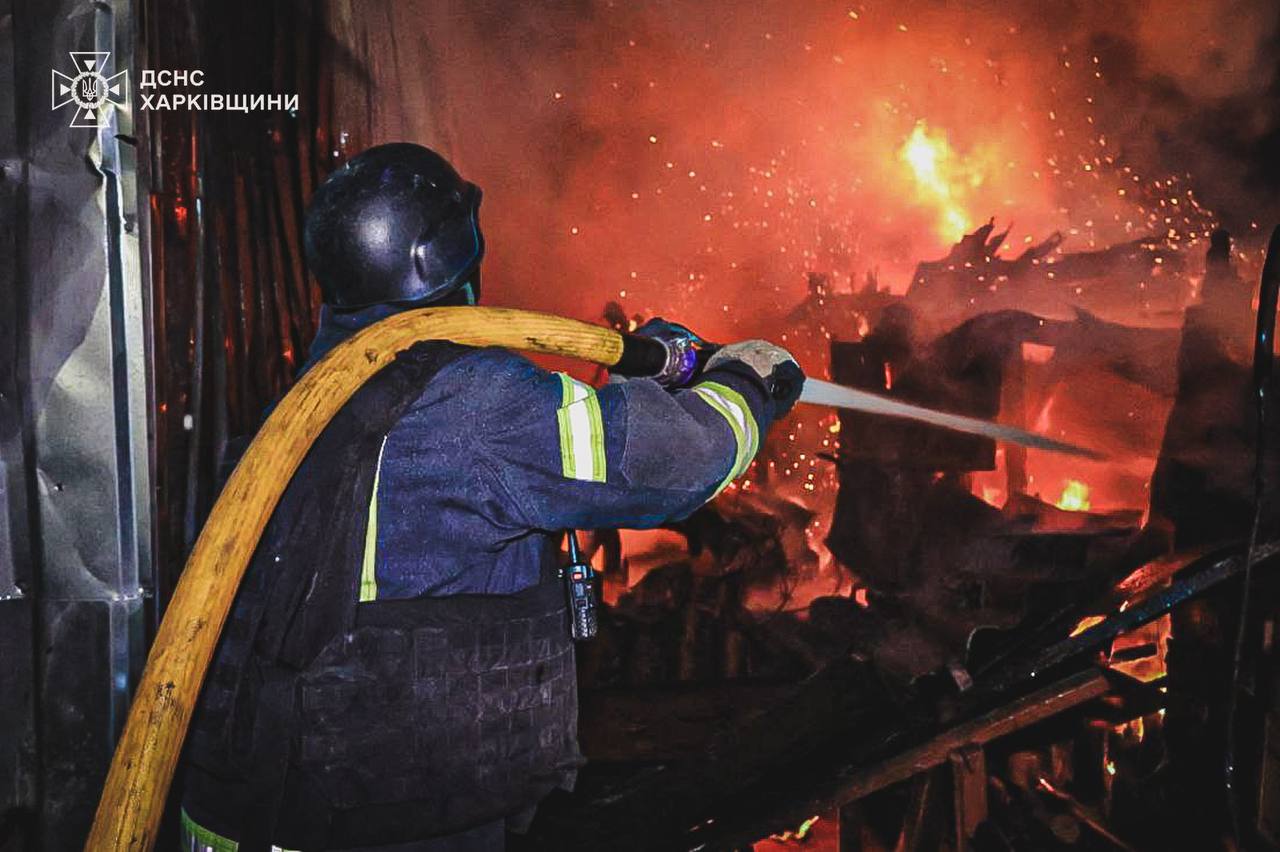
Russian forces launched a deadly drone attack against the city of Kharkiv late on April 3, killing at least four civilians, including Marina’s cousin, and injuring 35 others. The strike targeted an apartment building in the city’s Novobavarskyi district, causing a large fire and significant destruction.
“Russian drones attacked one of the districts of Kharkiv. As a result of strikes at residential buildings and an administrative building, four fires broke out,” Ukraine’s state emergency service reported.
Mayor Ihor Terekhov confirmed that rescue workers recovered a fourth body from the rubble in the early hours of April 4. The attack came as Russian forces continue to target Ukrainian cities with drones, missiles, and guided bombs despite ongoing peace talks and a partial “ceasefire” that was supposed to preclude attacks on energy facilities.
This tragedy underscores how the war that has raged for over three years continues to claim innocent lives daily. For many observers, each civilian death represents a statistic, but for the families left behind, each loss is a deeply personal catastrophe that permanently alters their lives.
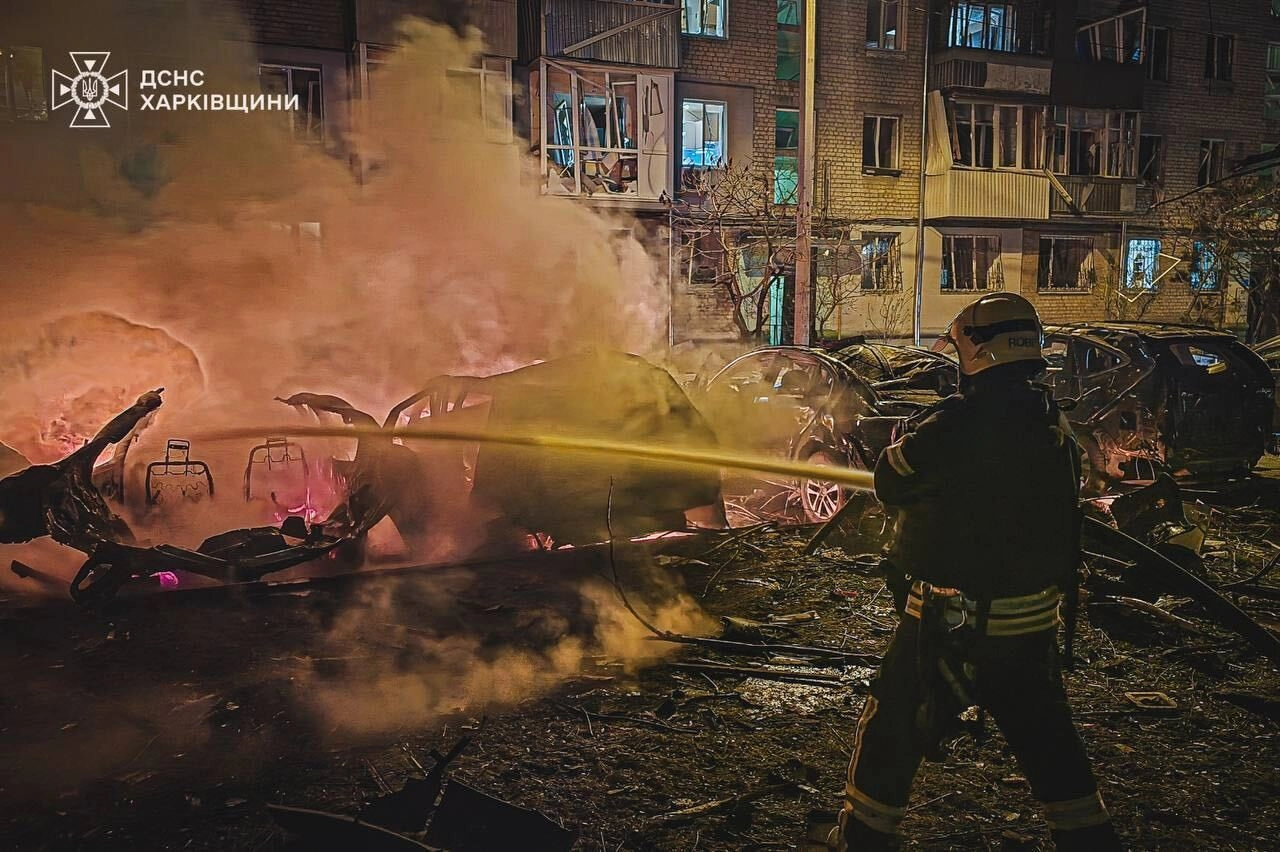
Moscow’s Military Buildup: Russia Plans 150,000 Troop Increase in Ukraine
Russia is preparing to add 150,000 soldiers to its force in Ukraine this year, equivalent to about 15 motorized infantry divisions, Presidential Office Deputy Head Pavlo Palisa revealed on April 3. This substantial reinforcement comes as Moscow continues advancing incrementally along the frontlines while participating in ceasefire consultations.
“Their formation is ongoing. The Russians have no problems with recruiting personnel now. However, it should be understood that all these formations cannot be put into action at the same time,” Palisa said.
The massive troop buildup signals Russia’s true intentions amid peace talks. According to Palisa, Moscow is only interested in ceasefire arrangements that serve its interests, particularly in maritime security, while it continues strengthening its position on the battlefield.
President Volodymyr Zelensky stated in January that Ukraine’s military consists of 880,000 soldiers defending the entire country against 600,000 Russian troops concentrated in different areas. The additional 150,000 Russian soldiers would significantly alter this balance, potentially tipping the scales further in Russia’s favor.
Phantom Progress: U.S.-Russia Talks Yield Claims of “Significant Progress”
Russian negotiator Kirill Dmitriev claimed “significant progress” has been made toward a ceasefire in Ukraine following meetings with U.S. officials in Washington on April 3. However, he provided no specific details about the proposed agreement.
“Significant progress has been made on the ceasefire agreement in Ukraine,” Dmitriev reported, according to Russian state news agency TASS, adding that “there is a process, there is a dialogue, which in our understanding will help to overcome these disagreements.”
Dmitriev, CEO of the Russian Direct Investment Fund and Putin’s special representative, met with Trump envoy Steve Witkoff at the White House during his visit—the first by a senior Russian official to Washington since sanctions were imposed following Russia’s full-scale invasion.
The talks notably excluded Ukraine, though Zelensky acknowledged the private discussions, saying: “In Saudi Arabia, you know, we agreed to an unconditional ceasefire. Russia has not agreed to it yet, we see that. Although we know that there are conversations between Americans and Russians on this topic. There are non-public conversations.”
Dmitriev also claimed American businesses are “ready to occupy the niches left by European companies that left the Russian Federation,” suggesting economic ties could be restored despite ongoing sanctions.
America’s Shifting Priorities: U.S. Defense Secretary to Skip Ramstein Summit
U.S. Defense Secretary Pete Hegseth will not participate in the Ramstein-format meeting of Ukraine’s allies in Brussels on April 11, marking the first time since the format’s founding in 2022 that the Pentagon chief will be absent. According to Defense News magazine, Hegseth is not expected to join even virtually, and the Pentagon is unlikely to send any senior representatives.
This significant shift comes as the Trump administration scales down U.S. presence in various international pro-Ukraine initiatives while pursuing bilateral ceasefire talks between Kyiv and Moscow.
Hegseth attended the previous Ramstein summit in February, but not as its chairman—a position his predecessor Lloyd Austin had held since launching the Ukraine Defense Contact Group after Russia’s invasion. At that meeting, Hegseth delivered a jarring speech to Ukraine’s partners, calling the country’s return to pre-2014 borders and accession to NATO “unrealistic.”
The Trump administration has yet to approve any new military aid packages for Ukraine, continuing only previously approved assistance while urging Europe to increase its contribution to Ukraine’s defense.
Europe Steps Up: NATO Assets May Support Peacekeeping Mission
NATO’s command structures could play a key role in the proposed European military mission to guarantee peace in Ukraine, the Financial Times reported on April 3, citing unnamed officials. The alliance’s command and control capabilities may be used to deploy a “reassurance force” to Ukraine in one proposal being discussed in French-led talks with the UK.
“If we are going to deploy assets from dozens of countries to Ukraine, then NATO is really the only command and control option that we can use,” one official told the Financial Times.
The proposal comes as European nations prepare to take a more prominent role in Ukraine’s defense amid uncertainty about continued American support. While U.S. President Donald Trump has refused to participate directly in any European-led mission, U.S. military capabilities in Europe remain integral to NATO operations.
On March 31, President Zelensky and UK Prime Minister Keir Starmer discussed plans to meet in Ukraine with military representatives from the “coalition of the willing” this week. This group of countries has pledged peacekeeping troops and other security guarantees for a potential ceasefire, with France and the UK leading the initiative.
Diplomatic Opening: Europe Seeks Direct Engagement with Putin
The “Coalition of the Willing” has agreed that at least one European leader should engage in dialogue with Russia, Finnish President Alexander Stubb revealed on April 3. Stubb suggested that either France or the United Kingdom, as key coalition leaders, should initiate contact with Russian President Vladimir Putin.
“In our discussion with the ‘Coalition of the Willing’ in Paris on Thursday (March 27), we recognized the reality that a European leader will have to reach out to Russia at some point,” Stubb told reporters in Helsinki.
European leaders have not engaged in negotiations with Putin since early in the full-scale war, when French President Emmanuel Macron and later German Chancellor Olaf Scholz held unproductive conversations with the Russian leader. European officials have also been excluded from recent U.S.-led ceasefire talks, including the latest meeting in Saudi Arabia on March 25.
Stubb previously stated that Finland must prepare for eventual restored relations with Russia, and Kremlin spokesperson Dmitry Peskov said on April 1 that Putin was open to normalizing relations with Finland. Finland, which joined NATO in 2023 in response to Russia’s invasion of Ukraine, shares a 1,300-kilometer border with Russia.
Czech Ammunition Initiative: Critical Support Secured Through September 2025
Czechia’s initiative to provide Ukraine with artillery ammunition has secured funding to continue monthly deliveries until September 2025, Czech Foreign Minister Jan Lipavsky announced on April 3. The program, backed by contributions from Canada, Norway, the Netherlands, Denmark, and other European countries, has significantly boosted Ukraine’s artillery capabilities.
Lipavsky claimed the initiative had reduced the effectiveness of Russian artillery “by 500%” and improved the shell ratio from 1-to-10 in Russia’s favor to 1-to-2. In 2024, the Czech initiative supplied Ukraine with 1.5 million rounds of ammunition, including 500,000 large-caliber 155mm and 152mm shells.
The initiative’s future remains uncertain, however, as Czechia’s opposition party ANO has vowed to suspend it if it wins parliamentary elections in October 2025. Opposition leader Karel Havlicek told Czech media Respekt: “We’re not going to continue the munitions initiative. Not at all.”
Prague has been among Ukraine’s strongest supporters, supplying military aid, leading EU efforts to secure weapons, and hosting tens of thousands of Ukrainian refugees. Czech President Petr Pavel also said on March 22 that the country was ready to contribute troops to a peacekeeping mission in Ukraine.
Defensive Innovation: Russian Buildings Disappear Behind Anti-Drone Nets
Entire apartment blocks in Belgorod Oblast, Russia, are being covered with anti-drone nets as officials claim they shield civilians from Ukrainian strikes. More than 40 apartment buildings have already been equipped with all-metal protective nets in the town of Shebekino.
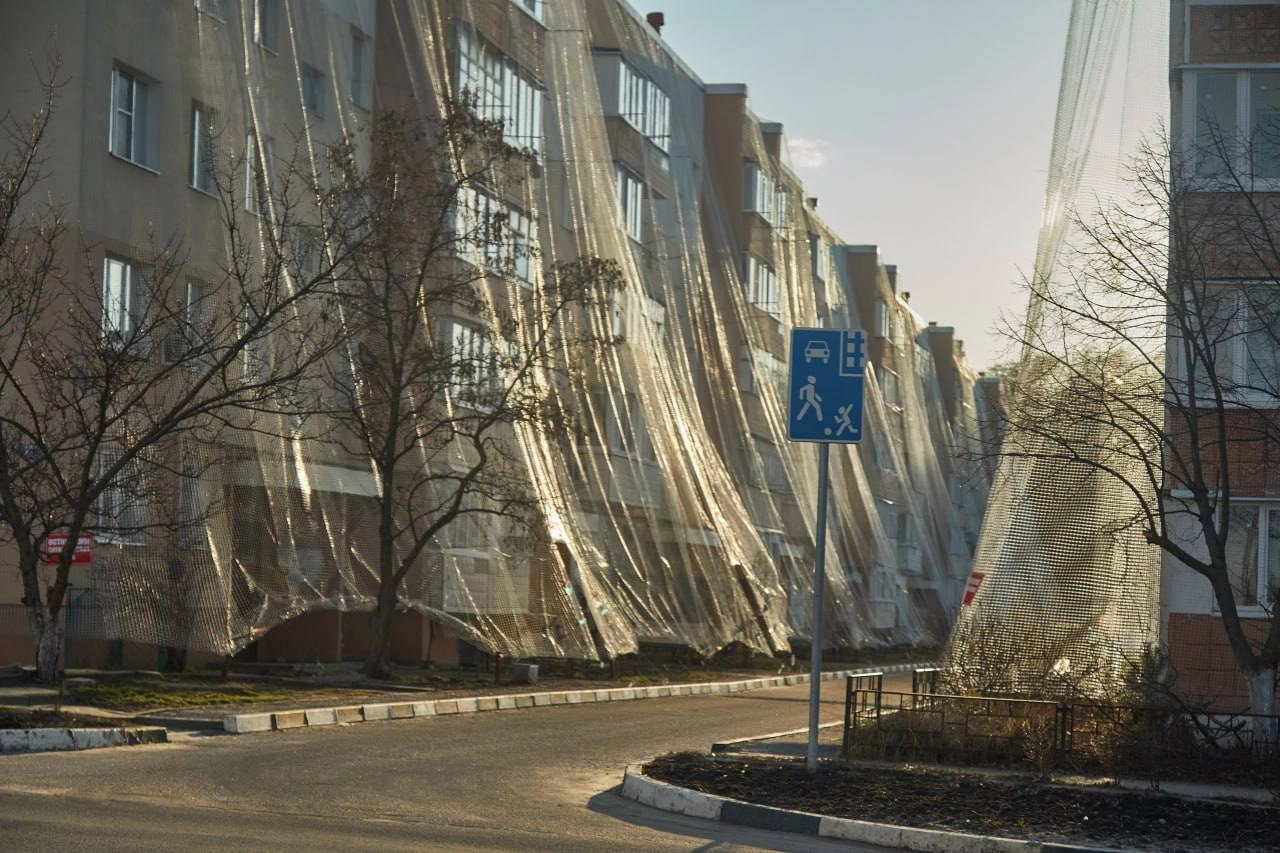
Belgorod governor Vyacheslav Gladkov announced the “large-scale project” in January, describing it as an “experiment” to find new solutions to protect people and property. By March 21, 2025, Russian outlet BelPressa reported that 41 buildings in Shebekino had been covered with the nets.
“It takes us five to six days per house. It depends on the length of the building, the number of floors, and the number of entrances,” said a worker named Andrey, as quoted by BelPressa. Residents reportedly feel safer with the nets, with one local named Tatyana telling media: “We feel safer with this net. These buzzing copters even fly into the windows – it’s scary, of course. But with the net, we feel calmer.”
Ukrainian Telegram channels responded with mixed reactions, with many mocking the decision and questioning the effectiveness of the structures. Some suggested the nets might be a scheme to embezzle money rather than providing real protection.
Russian forces have also constructed a 2-kilometer-long “tunnel” of nets near Chasiv Yar in the Donetsk region to shield their equipment from drone attacks, according to Ukrainian electronic technology specialist Serhii Beskrestnov.
European Ammunition Commitment: Over Half of Ukraine’s 5-Billion-Euro Package Secured
European countries have already committed more than 50% of the 5-billion-euro ($5.5 billion) package for 2 million ammunition rounds requested by Ukraine, top EU diplomat Kaja Kallas said on April 3. The statement follows the EU leaders’ decision at a March summit to help cover Ukraine’s ammunition needs through aid packages announced by individual countries.
“I’m glad to see that we already have different proposals or different countries are coming with their input to this, so we have already over 50% of what is needed,” Kallas said ahead of the EU defense ministers’ summit in Warsaw.
Kallas initially proposed a more ambitious 40-billion-euro ($43 billion) defense initiative for Ukraine, but European leaders have yet to reach an agreement on this larger package. The 5-billion-euro commitment for purchasing 2 million large-caliber ammunition rounds is viewed as a first step while negotiations continue on the more comprehensive proposal.
EU officials have been discussing ways to move the larger package forward, including basing contributions on consent to avoid a likely veto by Hungary, the bloc’s most Russian-friendly member state.
Strategic Stalemate: Russia Losing Tanks but Strengthening Assault Capability
Russia has lost more than 4,000 tanks during its war against Ukraine, according to General Christopher Cavoli, the head of the U.S. European Command. “The Russians have lost more than 4,000 tanks, which is the inventory almost of the United States tank corps,” Cavoli told American lawmakers during a Senate hearing on April 3, describing the scale of the conflict as “awe-inspiring.”
The general noted that Russia started the war with approximately 13,000 tanks and is “starting to approach near the end of the viable tanks in storage.” Despite these losses, Russia has expanded its capability to produce shells, cruise missiles, and first-person view (FPV) drones.
Cavoli warned that the war has “distorted” the Russian economy and “turbocharged” the Russian defense industry at the expense of Russia’s civilian economic sector, creating an imbalance that may be difficult to reverse. While Russia will likely be able to replace its significant personnel losses ahead of a future conflict in Europe, its ability to replace materiel losses depends on Ukraine’s continued capacity to inflict damage.
The general also cautioned that without continued U.S. military and intelligence assistance, Ukraine would suffer “a rapid and deleterious effect on their ability to fight,” as Kyiv’s forces depend on American aid to shoot down Russian missiles and target Moscow’s command posts and logistics areas.
Trade War Complications: Trump’s Tariffs Hit Ukraine, Spare Russia
U.S. President Donald Trump unveiled a sweeping list of “reciprocal tariffs” on April 2, imposing a baseline 10% duty on all countries—including Ukraine—while exempting Russia from the list. The White House explained that Russia was left off because existing sanctions “preclude any meaningful trade,” according to White House spokesperson Karoline Leavitt.
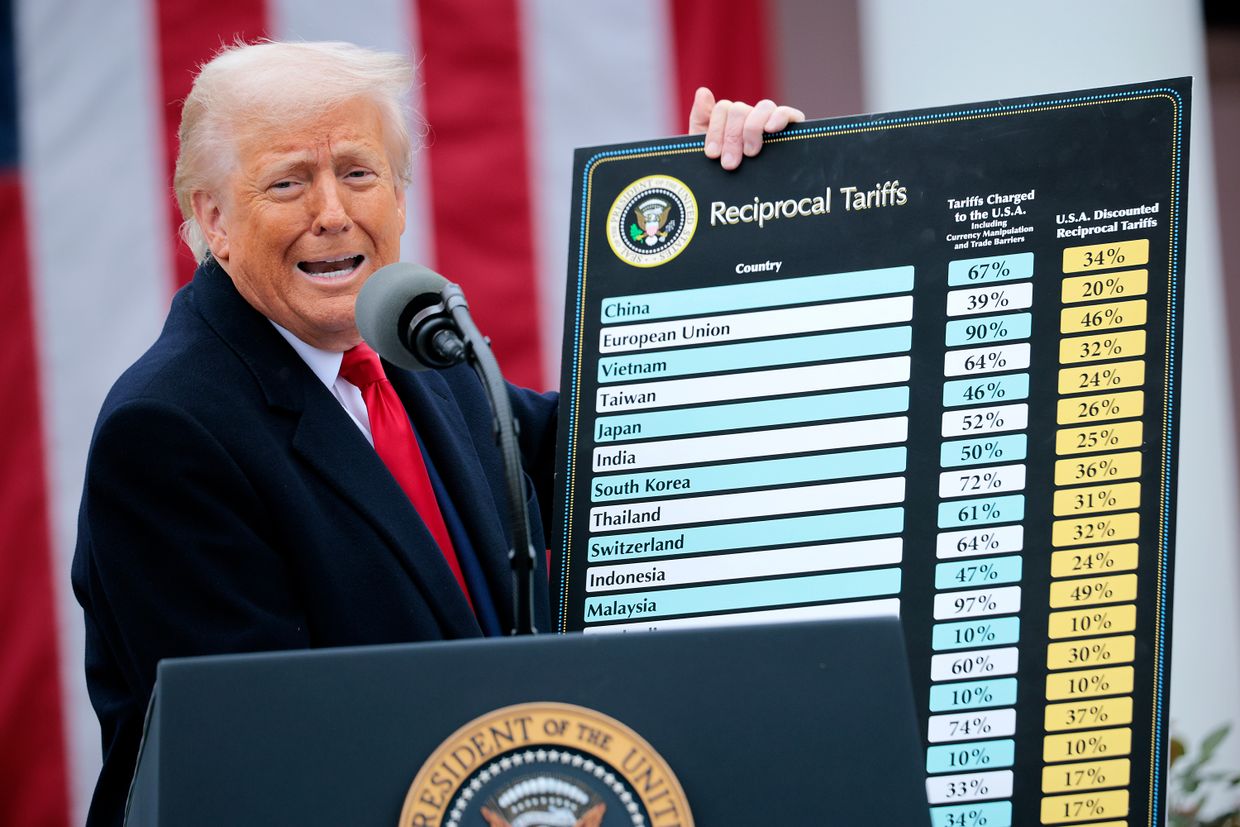
Ukraine’s Economy Minister Yuliia Svyrydenko called the impact “difficult, but not critical” for Ukraine’s economy, noting that Ukrainian exports to the U.S. in 2024 amounted to $874 million, representing only 2% of the country’s total exports. The most affected sector will be metallurgy, Ukraine’s primary export to the U.S.
The tariffs follow a previous round of 25% duties in March that severely impacted Ukraine’s metallurgy sector. In contrast, some countries face much higher tariffs, including the EU (20%), China (34%), and Taiwan (32%).
The exemption of Russia from the tariff list has raised eyebrows, especially as Trump has hinted at easing some sanctions against Moscow as part of efforts to broker a ceasefire in Ukraine. Simultaneously, he has threatened secondary tariffs on Russian oil exports if negotiations stall.
Military Losses: Russian Strategic Bomber Crashes in Irkutsk
A Russian Tu-22M3, a strategic bomber frequently used to launch Kh-22 missiles over Ukraine, crashed in Russia’s Irkutsk region on April 3. According to Russia’s Defense Ministry, the aircraft went down in a deserted area due to a technical malfunction.
Irkutsk Governor Igor Kobzev reported that the plane was on a scheduled flight when it crashed near the village of Buret, which has a population of 670. All four crew members ejected, but the commander reported that one of his team was killed. The surviving crew members are receiving medical care.
The crash caused a power outage after the plane struck a power line, cutting electricity to 210 homes and three critical facilities, including a secondary school. Despite TASS claiming there was no fire, Russian social media published footage showing flames and smoke at the crash site.
This is the second Tu-22M3 crash in Irkutsk in less than a year—a similar incident occurred on August 15, 2024, which the Russian Defense Ministry also attributed to a technical failure. The Tu-22M3, a Soviet-era strategic bomber in service since 1982, is designed to deliver both nuclear and conventional strikes and plays a key role in Russia’s long-range air attacks on Ukraine.
Ukrainian Sabotage Thwarted: SBU Uncovers Plot to Attack Police Building
Ukraine’s Security Service (SBU) reported uncovering a Russian-directed plot to bomb a police administration building in Lviv. The agency detained two suspects, including a 22-year-old woman from Kyiv who was allegedly recruited via Telegram with promises of “easy money.”
According to the SBU, the woman was initially tasked with distributing Russian propaganda leaflets in the Ukrainian capital. After completing this “test” assignment, she was instructed to travel to Lviv to carry out the attack on the local district police department, recruiting an acquaintance to assist her.
Security services say the attackers planned to install a hidden camera to broadcast the explosion’s impact to their Russian handlers. The device, disguised as a fire extinguisher, was taken from a hidden cache based on coordinates provided by Russian intelligence officers from the GRU.
The SBU “exposed both agents in advance, documented their crimes, and detained them ‘red-handed’ as they approached the police unit with explosives.” Both suspects have been charged with high treason under martial law, a crime punishable by life imprisonment with property confiscation.
NATO Reaffirmation: U.S. Secretary of State Dispels Alliance Withdrawal Fears
U.S. President Donald Trump has made clear he supports NATO, and the United States remains “as active in NATO as it has ever been,” Secretary of State Marco Rubio stated on April 3 during a press briefing alongside NATO Secretary General Mark Rutte in Brussels.
“Some of this hysteria and hyperbole that I see in the global media, and some domestic media in the United States, about NATO is unwarranted,” Rubio said, responding to concerns about the Trump administration’s commitment to the alliance.
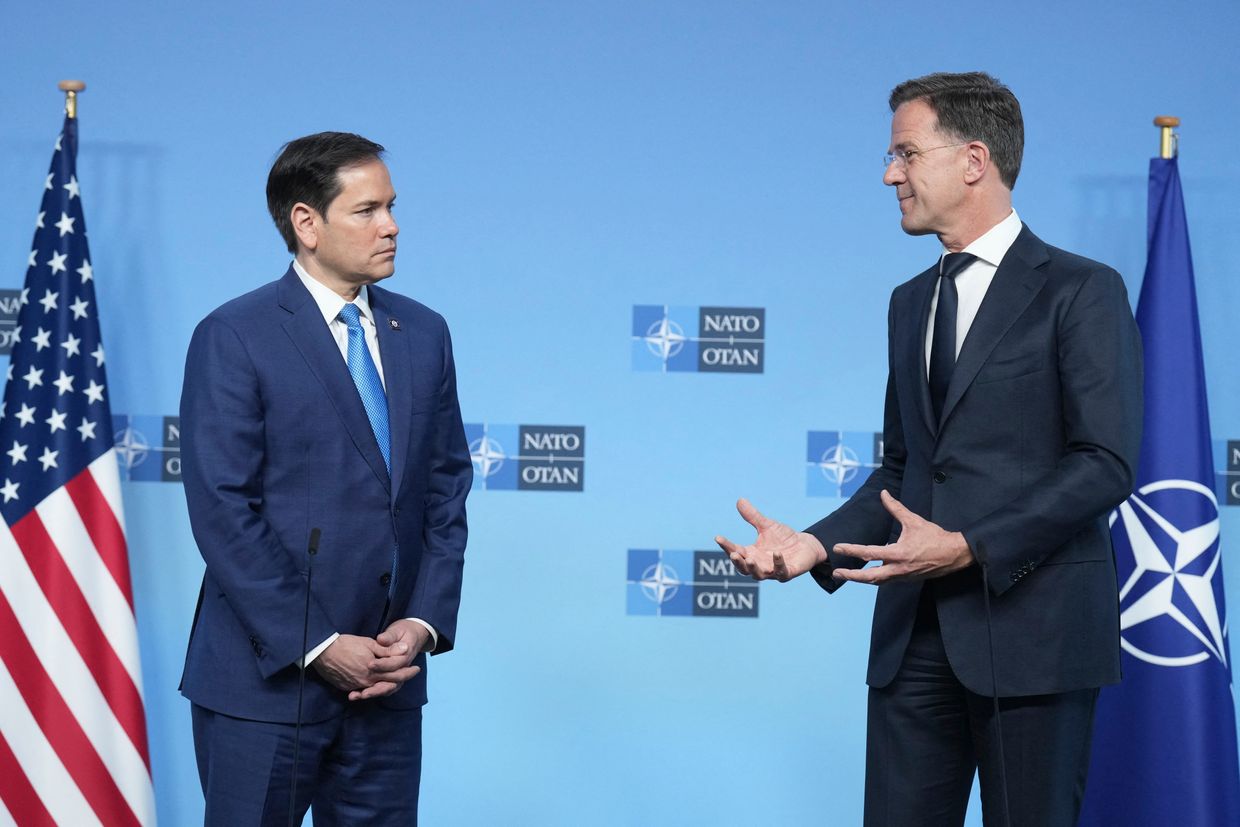
Trump has been a vocal critic of NATO partners, accusing European countries of not contributing their fair share to defense spending. His administration has also signaled a strategic pivot from Europe to the Indo-Pacific region, and some hardline Republicans have advocated for the U.S. to leave the alliance altogether.
“President Trump has made clear he supports NATO. We’re going to remain in NATO,” Rubio insisted, while emphasizing the need for each member to commit more resources and achieve the goal of 5% of GDP in defense spending.
NATO Secretary General Rutte warned that Russia would remain a threat to the alliance “for many years to come” even if a peace deal in Ukraine is reached, underscoring the need for continued vigilance and defense preparedness.
Denmark’s Long-Term Commitment: $970 Million Aid Package Through 2027
The Danish government has approved its 25th package of military assistance to Ukraine worth 6.7 billion Danish kroner ($970 million), providing support from 2025 until 2027. Funded through the Danish Ukraine Fund, the package includes air defense equipment, artillery, and financial assistance to the Ukrainian Air Force.
“The security situation is evolving rapidly. Therefore, Denmark must continue its massive support to Ukraine. From the start of the war, Denmark has been among the countries leading the way in donations,” Danish Defense Minister Troels Lund Poulsen said.
The assistance program allocates 1.4 billion Danish kroner ($203 million) until 2027 for artillery and ammunition purchases in cooperation with allies. Additionally, Denmark will invest 2 billion Danish kroner ($290 million) in Ukraine’s defense industry.
“The Danish model has shown that there is a Ukrainian capacity to produce and deliver equipment for the Ukrainian fight for freedom. Denmark must continue to invest in this, and I hope that other countries will follow our example to an even greater extent,” Poulsen added, referencing Denmark’s pioneering approach of purchasing weapons for Ukraine directly from Ukrainian producers.
American Troops Mourned: Lithuania Honors Four U.S. Soldiers
Hundreds of Lithuanians paid their respects on April 3 to four U.S. soldiers who died when their vehicle sank in a peat bog at a military training ground in the Baltic country. Three of the soldiers were found dead on Monday when rescuers recovered their M88 Hercules armored vehicle from a swamp in eastern Lithuania, where it had gone missing the previous week. The fourth soldier was found a day later.
Lithuanian President Gitanas Nauseda and other officials watched as a procession with the soldiers’ remains stopped in a central square in Vilnius before the bodies were flown back to the United States. Hundreds of people held U.S. and Lithuanian flags as the procession passed through an arterial avenue while cathedral bells tolled.
“Their willingness to be with us… in this tough neighborhood is the best proof of who our friends are today,” Nauseda told reporters, highlighting the significance of NATO’s presence in the Baltic region.
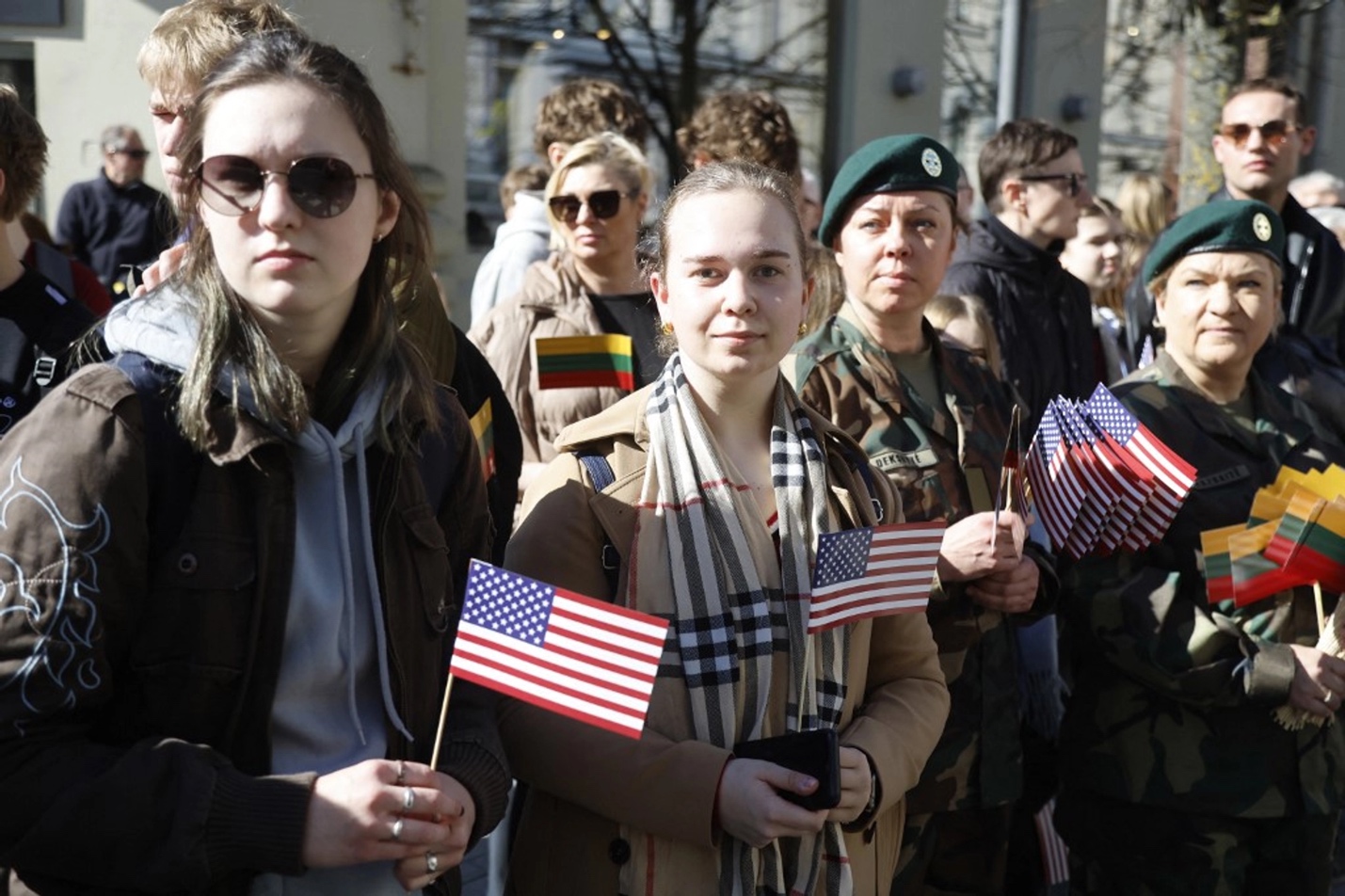
Lithuania, a NATO and EU member bordering Russia and Belarus, hosts more than 1,000 American troops stationed on a rotational basis. The country has ramped up defense spending and training since Russia invaded Ukraine, voicing fears that Moscow could target the Baltic states next.
Communication Lifeline: Poland Delivers 5,000 Starlink Terminals to Ukraine
Ukraine has received 5,000 additional Starlink terminals from Poland to support critical infrastructure and maintain communications in front-line cities, Digital Transformation Minister Mykhailo Fedorov announced on April 3. The satellite internet terminals are crucial for residents in contested areas where regular communication infrastructure has been destroyed.
“Starlinks will help residents of the front-line territories to stay in touch: call relatives, call emergency services, read the news. Due to attacks and destruction of base stations in the de-occupied territories, regular communication is unavailable,” Fedorov wrote on Facebook.
According to the minister, Ukraine has received over 50,000 Starlink terminals since Russia’s full-scale invasion began, with Poland providing around 29,500 of them—making it the largest single supplier.
Concerns over Ukraine’s continued access to Starlink have grown since Reuters reported in February that the U.S. threatened to cut the service unless Kyiv agreed to a critical minerals deal. SpaceX CEO Elon Musk denied these claims, but uncertainty remains, particularly after the tense February 28 meeting between U.S. President Donald Trump and President Zelensky that led to temporary halts in U.S. military aid and intelligence sharing.
Ukrainian officials have been exploring alternatives, with French satellite operator Eutelsat Communications in talks with the EU to potentially replace the U.S.-based system in Ukraine.
Diplomatic Retreat: Hungary Withdraws from ICC as Netanyahu Visits
Hungary has announced its withdrawal from the International Criminal Court (ICC) as Israeli Prime Minister Benjamin Netanyahu arrived in Budapest for his first trip to Europe since the ICC issued an arrest warrant for him. Hungarian Defense Minister Kristof Szalay-Bobrovniczky met Netanyahu at the Budapest airport around 2:30 a.m. local time on April 3.

Hours later, Gergely Gulyas, Prime Minister Viktor Orban’s chief of cabinet, confirmed the government was exiting the court in The Hague. “Hungary will exit the International Criminal Court. The government will start the exit procedure on Thursday by the constitutional and international legal framework,” Gulyas said.
The withdrawal process is expected to take up to a year, as Hungarian parliament approval is required. As an ICC member, Hungary is obliged to arrest Netanyahu but has not done so. The ICC also issued an arrest warrant for Russian President Vladimir Putin in March 2023 for the forcible transfer of children from Russian-occupied areas of Ukraine.
The Hungarian move follows a pattern of some countries evading their ICC obligations. In September 2024, Putin visited Mongolia, an ICC member country, but was not arrested, with Mongolian officials citing energy dependence as a reason for not executing the warrant.
Russian Sanctions Relief: U.S. Lifts Restrictions on Oligarch’s Wife
The U.S. Treasury Department announced on April 2 that it has lifted sanctions on Karina Rotenberg, the wife of Russian businessman and oligarch Boris Rotenberg. The Treasury Department did not provide an explanation for this decision.
Boris Rotenberg, a close ally of Russian President Vladimir Putin, is the co-owner of the Stroygazmontazh group—Russia’s largest construction company for gas pipelines and electrical power supply lines. The U.S. first sanctioned him in 2014 after Russia’s annexation of Crimea.
This move comes as U.S. President Donald Trump has hinted at the possibility of easing some sanctions imposed on Russia as part of efforts to broker a ceasefire and peace deal in Ukraine. The lifting of sanctions on Karina Rotenberg may signal a shift in U.S. policy toward Russia, though the implications remain unclear.
Looking Ahead: The Path to Peace Remains Uncertain
As diplomatic efforts continue on multiple fronts, the gap between rhetoric and reality grows wider. Russia’s planned troop increase and continuing offensive operations contradict claims of progress toward peace. Meanwhile, Europe is stepping into leadership roles as U.S. engagement in multilateral Ukraine support frameworks wanes.
President Zelensky believes a full ceasefire could end the “hot phase” of the war “in the coming weeks” if Western countries put sufficient pressure on Moscow—but acknowledges that the return of some Russian-occupied territories may only be possible through lengthy diplomatic processes rather than military means.
With U.S.-Russia talks continuing behind closed doors and European nations preparing for a potential peacekeeping mission, the diplomatic landscape is shifting rapidly. Yet as civilians continue to die in Kharkiv and elsewhere, and as Russia rebuilds its military strength, the path to genuine peace remains elusive and fraught with challenges.
For Marina and countless others who have lost loved ones to this war, diplomatic pronouncements and strategic analyses will never erase the personal cost they’ve paid. Their grief stands as a stark reminder of what’s truly at stake in this conflict—not just territory or geopolitical influence, but human lives and the families who cherish them.
